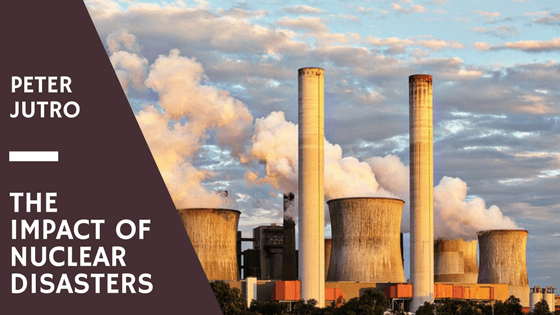Nuclear power has become a key component of the world’s energy supply. It is the only clean-air source of energy that produces electricity nonstop, 24/7. Yet, despite its ubiquity and the world’s reliance upon it, the word “nuclear” cannot be spoken without a reminder of the disastrous accidents that this form of energy has caused.
Three of the largest nuclear power plant disasters in history, from newest to oldest, are Fukushima Daiichi (2011), Chernobyl (1986), and Three Mile Island (1979), all three of which have become iconic names. The effects of these disasters can still be seen today, years later. I had the opportunity to visit one of the reactors at Fukushima in Japan, the site of the latest major nuclear accident, which was fascinating in a macabre way. I couldn’t take anything back with me from the site, not even photographs. It was an altogether spooky experience; I was literally visiting a ghost town. After this latest disaster, as in the past, nuclear power plants around the world took action to make their facilities safer. The nuclear energy industry as a whole was not left unscathed.
The nuclear power industry may take every measure to prevent a disaster of such a large scale from happening ever again, but it does lead one to wonder: just how safe is nuclear energy and are we every 100% safe from exposure to radiation? In order to understand what makes nuclear power so threatening and the measures that should be taken to ensure safe usage, one must first have an understanding of what exactly nuclear energy is and how it works.
What is nuclear energy?
There are two types of nuclear energy, fission and fusion. Fusion is the reaction that powers our sun and h-bombs. Fission is responsible for the destructive force of a-bombs, and the production of electric energy. Nuclear energy is the most powerful energy source there is, and also the most dangerous if not managed properly. The heat generated from the fission of splitting uranium atoms within a reactor heats water to produce steam that is, in turn, converted to electricity by powering a turbine. A single uranium fuel pellet the size of a pencil eraser contains as much energy as 17,000 cubic square feet of natural gas, 1,780 pounds of coal, or 149 gallons of oil. Nuclear energy is considered a clean form of energy because the generation process does not release greenhouse gases into the environment. It is also often considered a sustainable source of energy because there is enough uranium in the world to fuel reactors for at least 100 years. However, the process of nuclear fission also releases minimal amounts of radioactive material into the environment and, although monitored by the federal government, is a source of concern for many people. In addition, the disposal of spent nuclear fuel has become a massive political issue.
What safety measures are taken?
The Nuclear Energy Institute, an association composed of members of the nuclear industry, insists that a nuclear disaster the scale of Chernobyl, considered the world’s worst nuclear disaster to date, would be impossible in the United States. It insists that It would be physically impossible for a U.S. commercial nuclear energy facility to run out of control and explode like the Chernobyl RBMK reactor did, because U.S. reactors are equipped with safety devices so that when the temperature inside a reactor reaches a certain level, the fission process is automatically suppressed to prevent the power level from spiking. After more than half a century of operation in the United States, no radiation-related deaths have been attributed to nuclear power plants, which is a claim that cannot be made by the fossil fuel energy industry.
How does the United States respond to nuclear disasters?
There is always the risk that nature will intervene and override any safety measures set in place, as the latest accident in Fukushima, Japan demonstrates. The earthquake and tsunami that struck Japan on March 11, 2011 set off a chain reaction after it cut off the external power to the site’s reactors, thereby causing the reactor cooling systems to fail. Overheated fuel in the plant’s reactor cores created explosions that caused substantial damage to buildings and released radiation into the surrounding area, forcing nearly half a million residents to evacuate their homes, farms, and businesses.
After the disaster in Fukushima, the United States tightened its safety precautions even more, with the nuclear energy industry and the Nuclear Regulatory Commission taking measures to TRY TO make facilities as safe as possible. Across the globe, this incident was not taken lightly, as Germany and Switzerland have decided to phase out their nuclear energy facilities, and Japan shut down all its plants, and only gradually reopened them after making significant safety improvements.
While nuclear energy providers in the United States will, of course, insist that nuclear energy is a safe and sustainable form of energy with nothing to worry about, these disasters suggest that one must always be wary of such assertions. Perhaps, had more safety measures been in place, such accidents would not have occurred, but of course, that argument is age old, and things do happen. Nuclear energy isn’t going anywhere anytime soon in the United States, but the threat of accidents and radiation exposure underscores the importance of investing in alternative energy sources such as hydro, solar, and wind power in addition to seeking an inherently safe reactor, and a workable solution to the radioactive waste problem.

